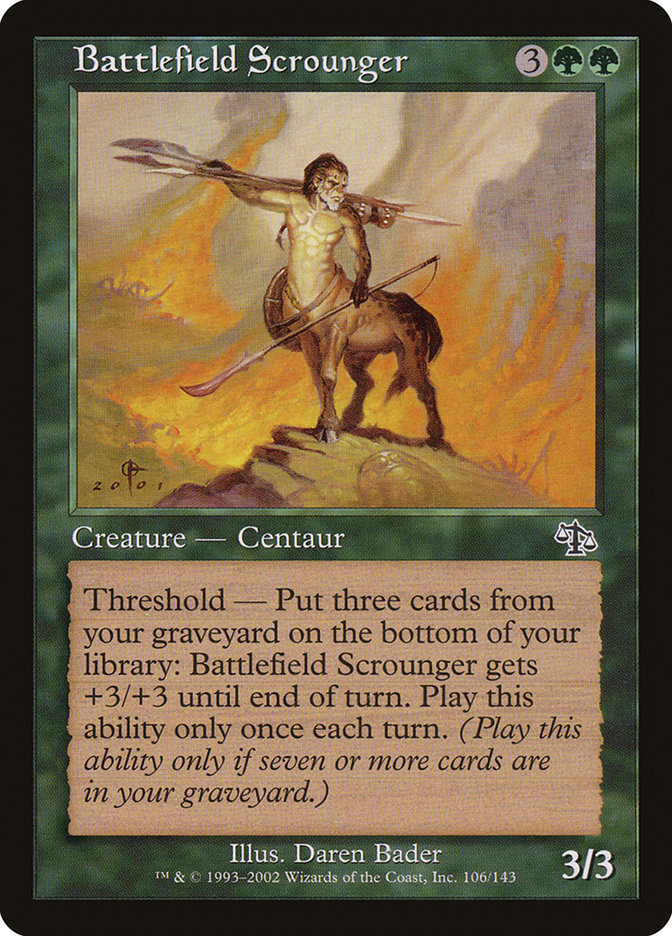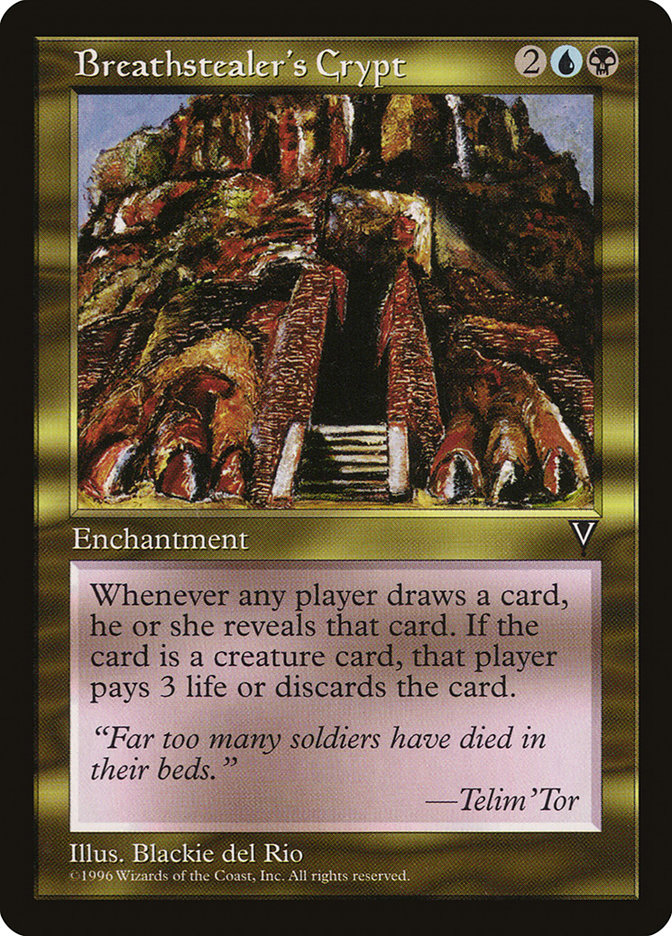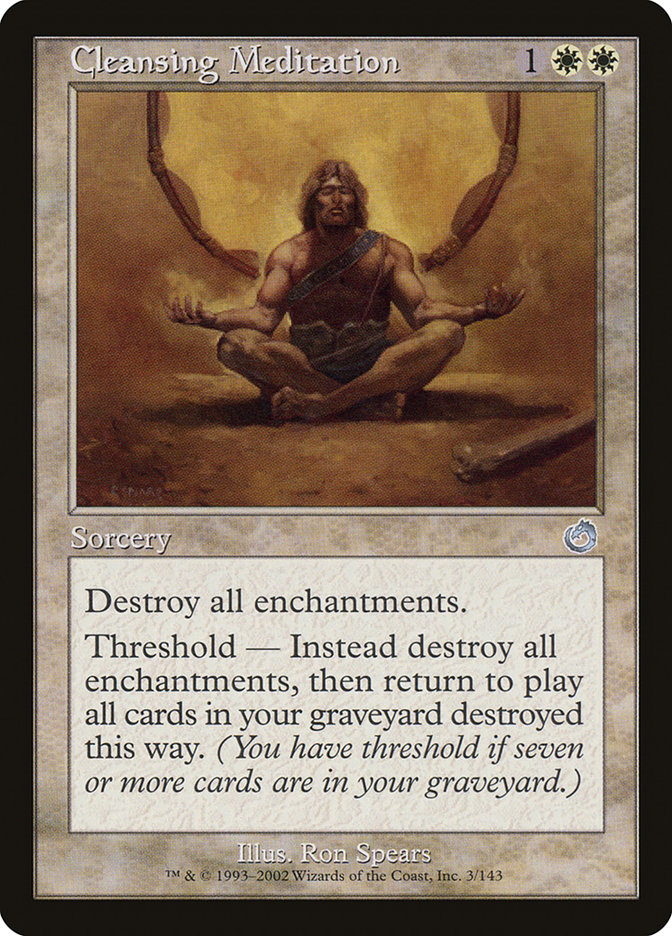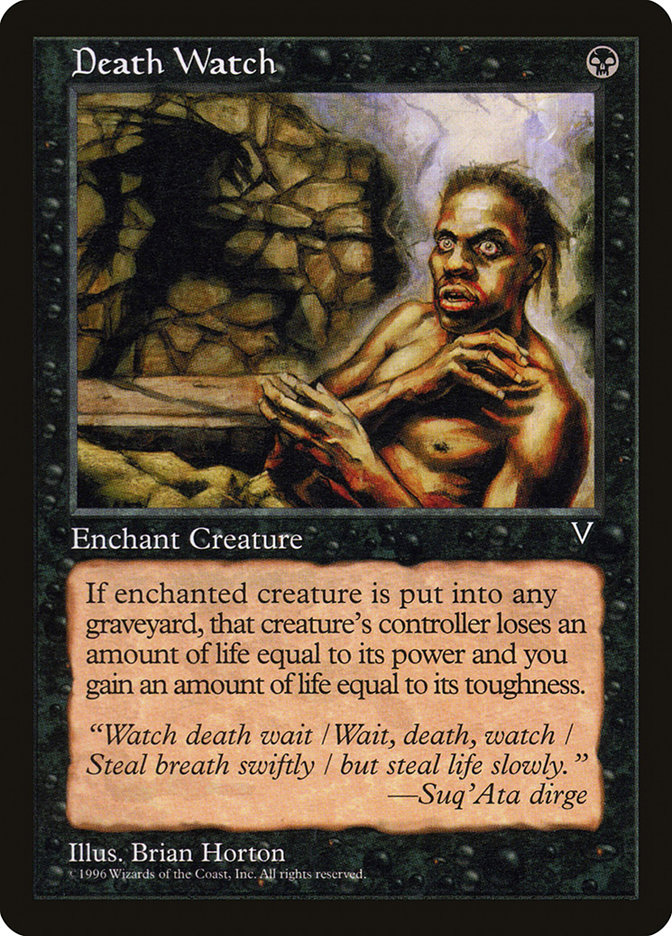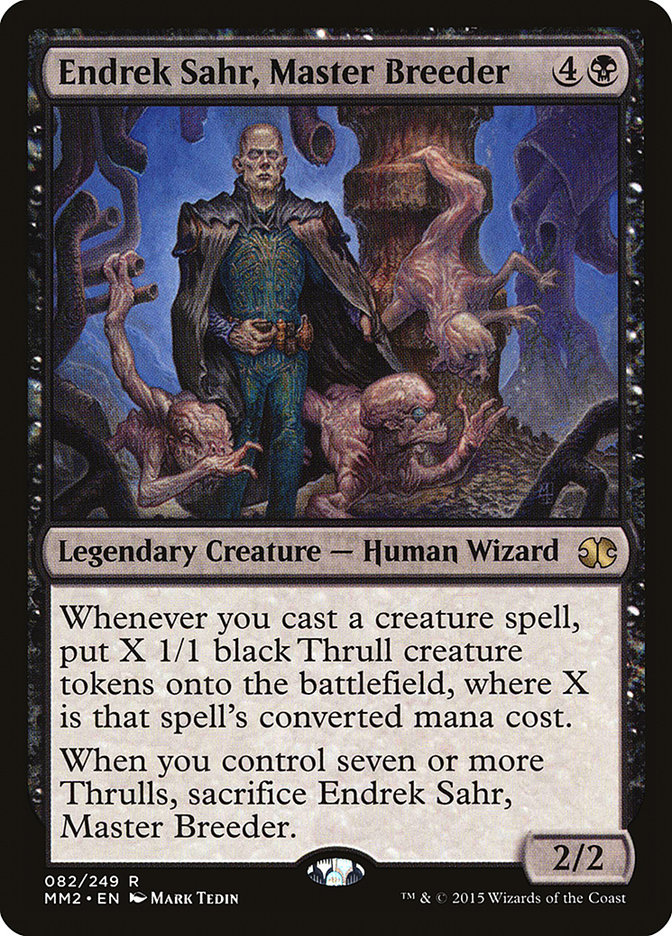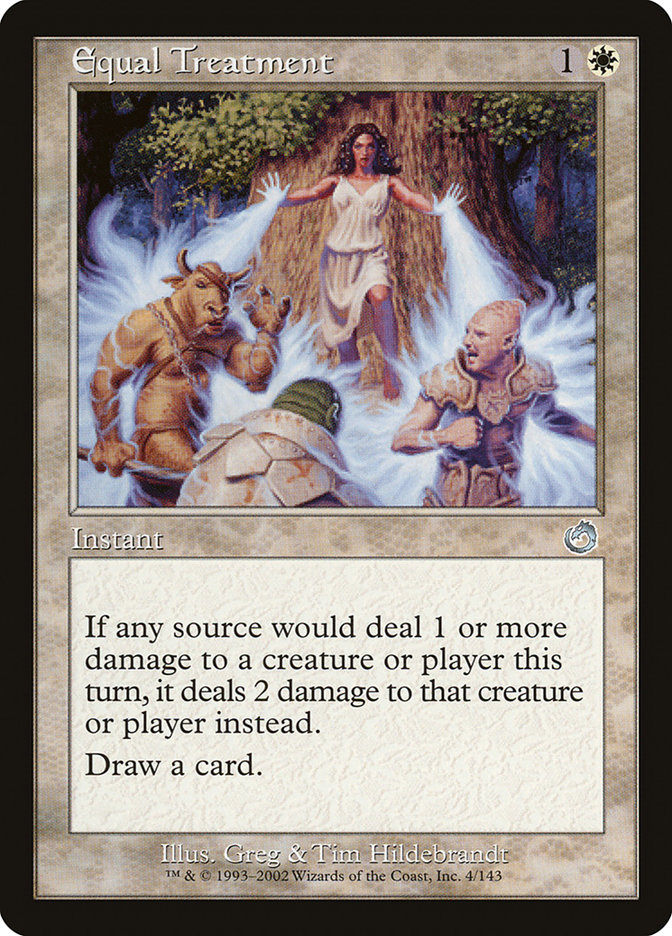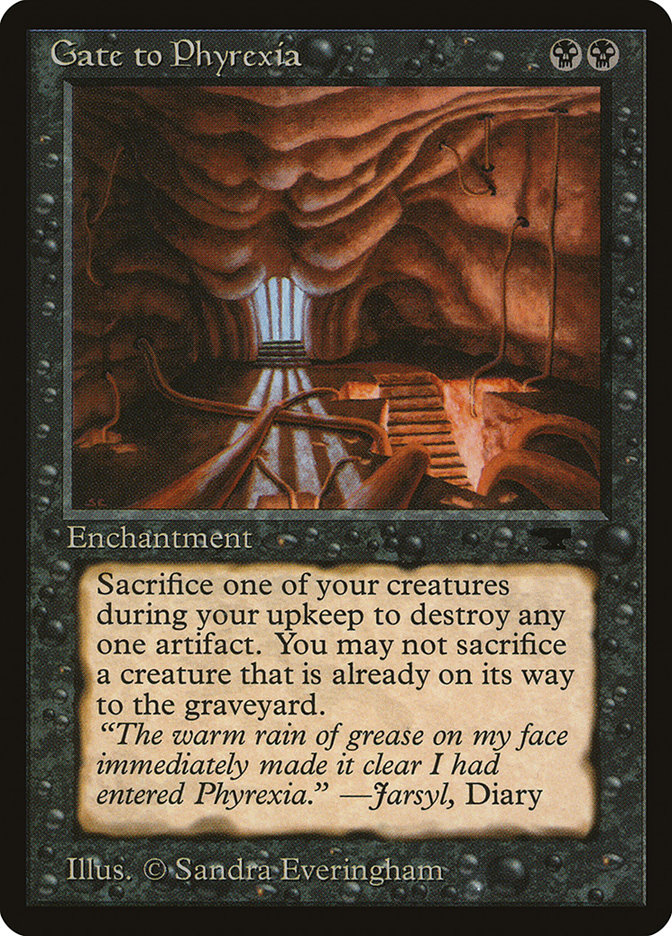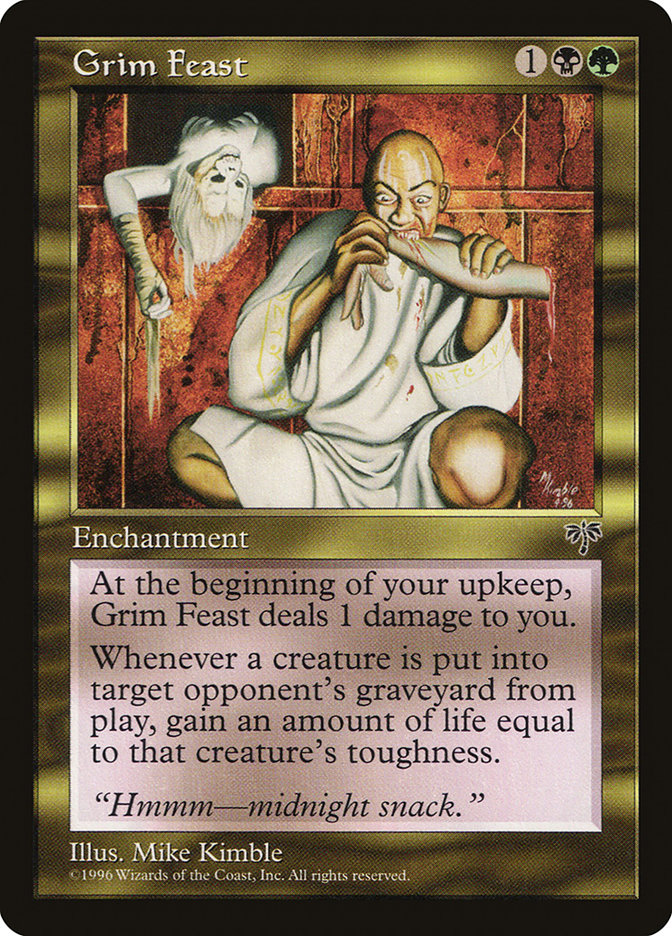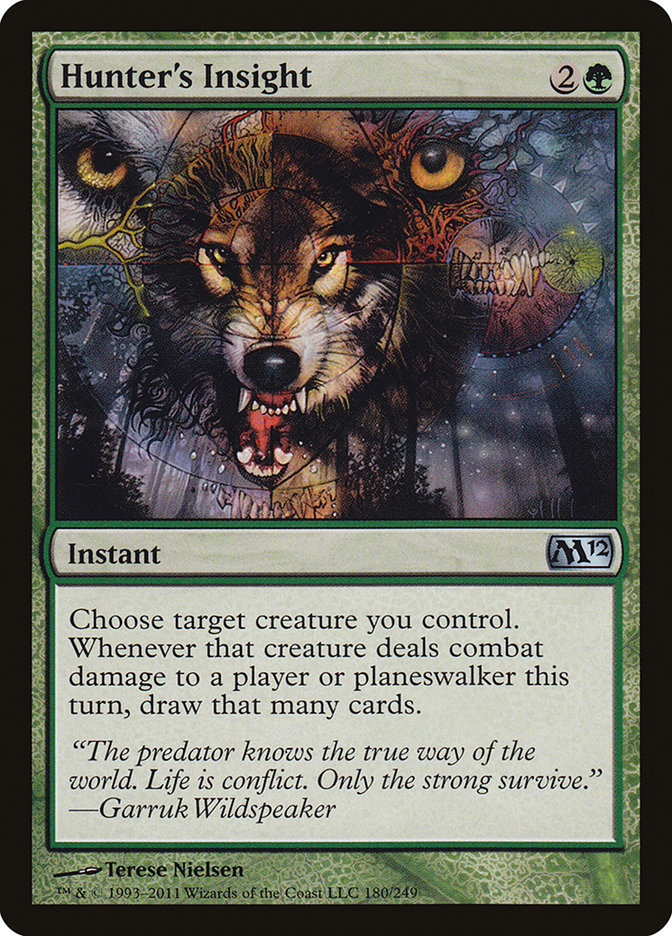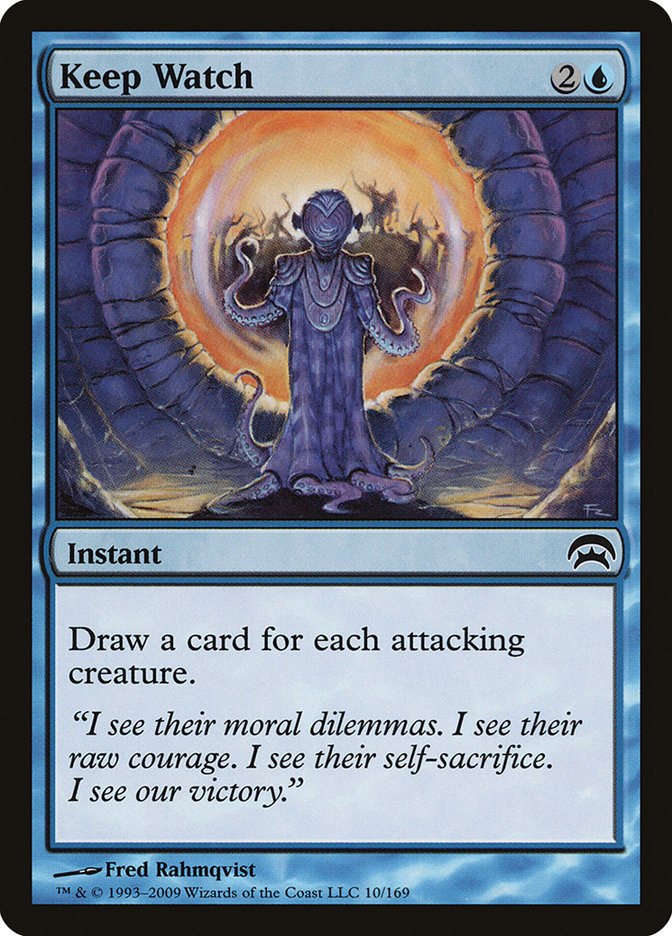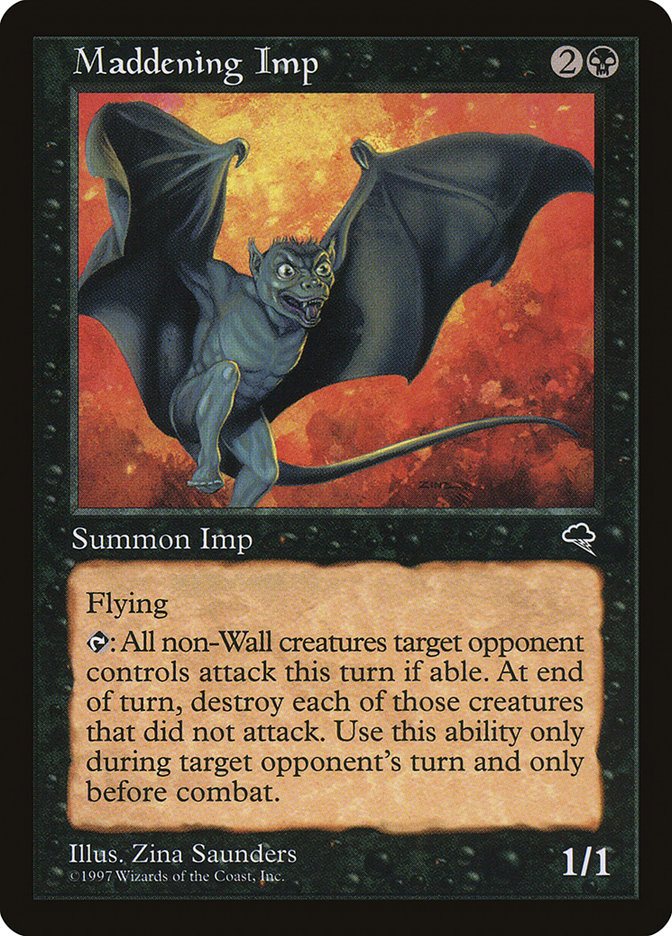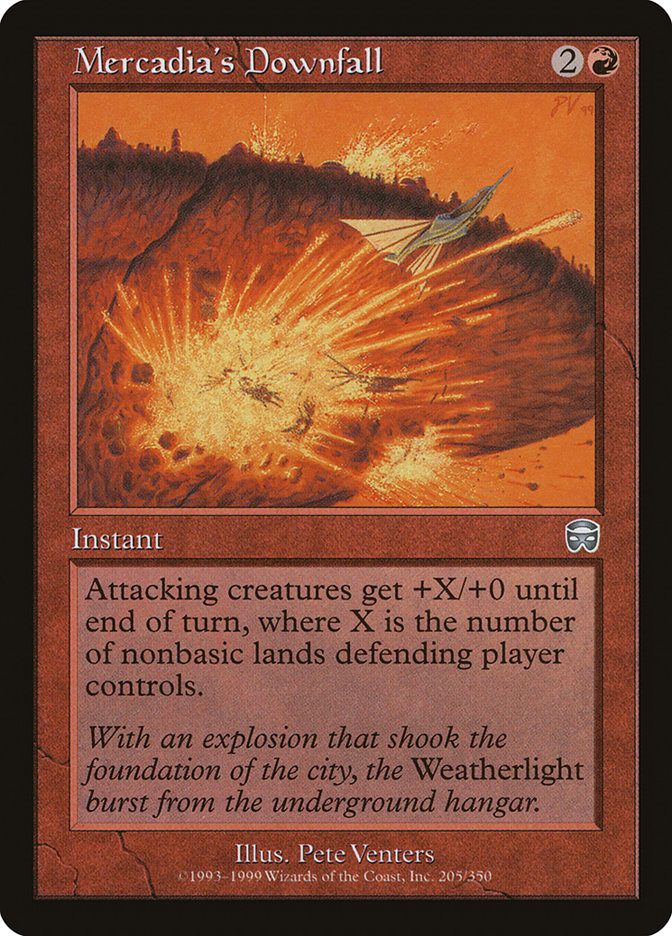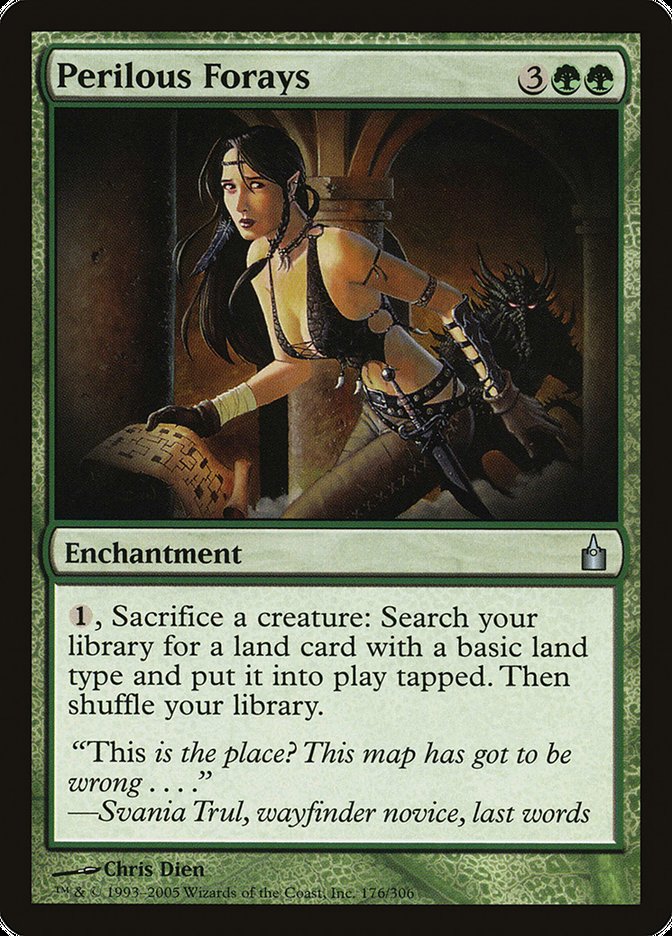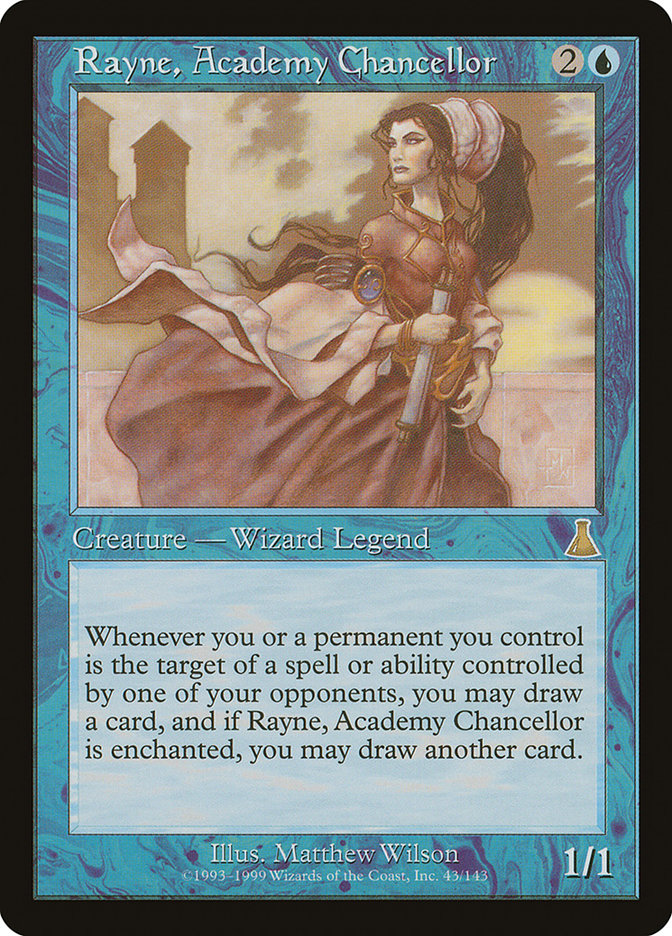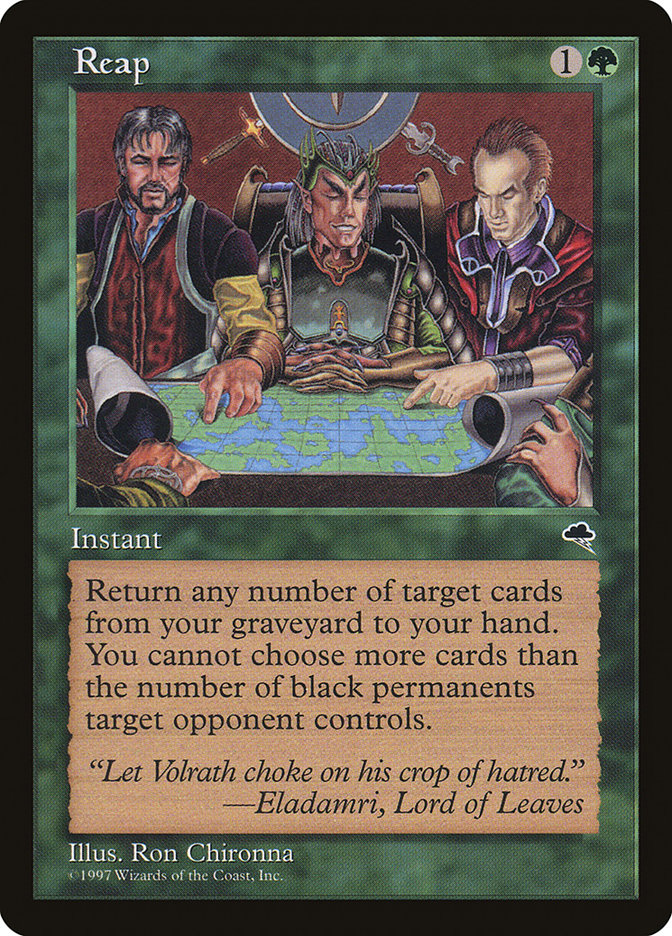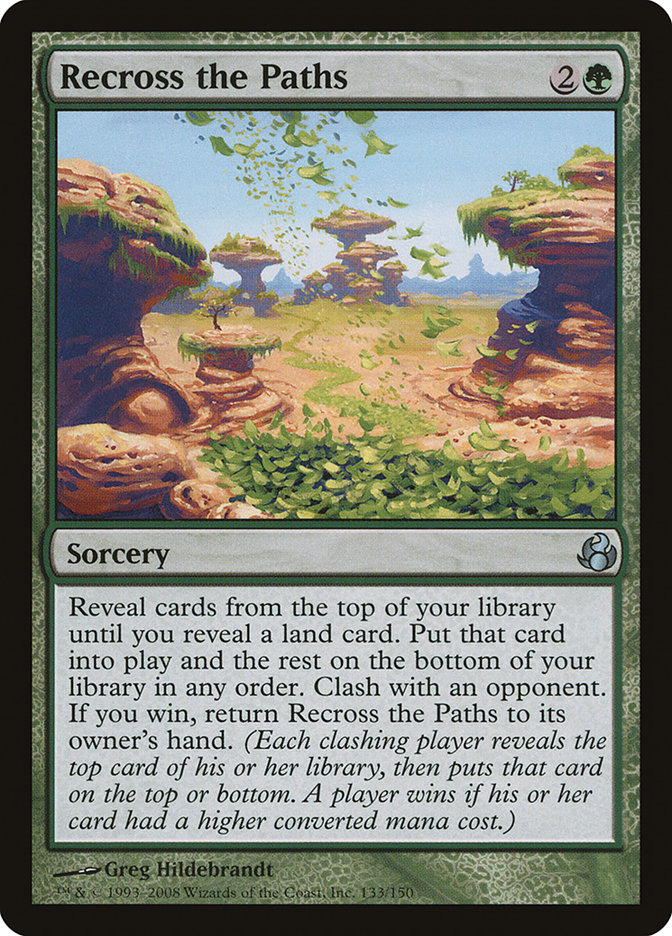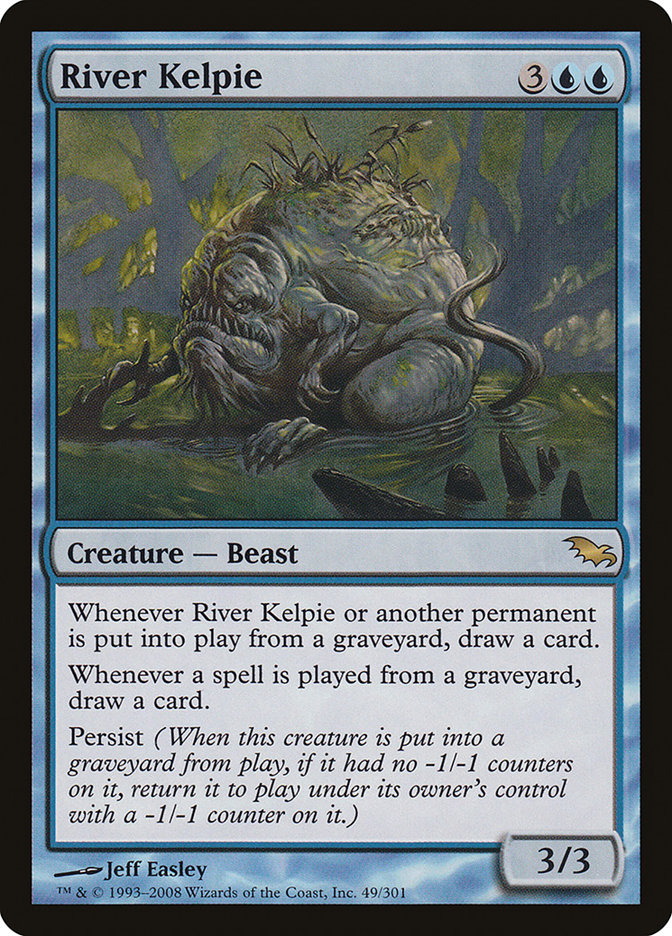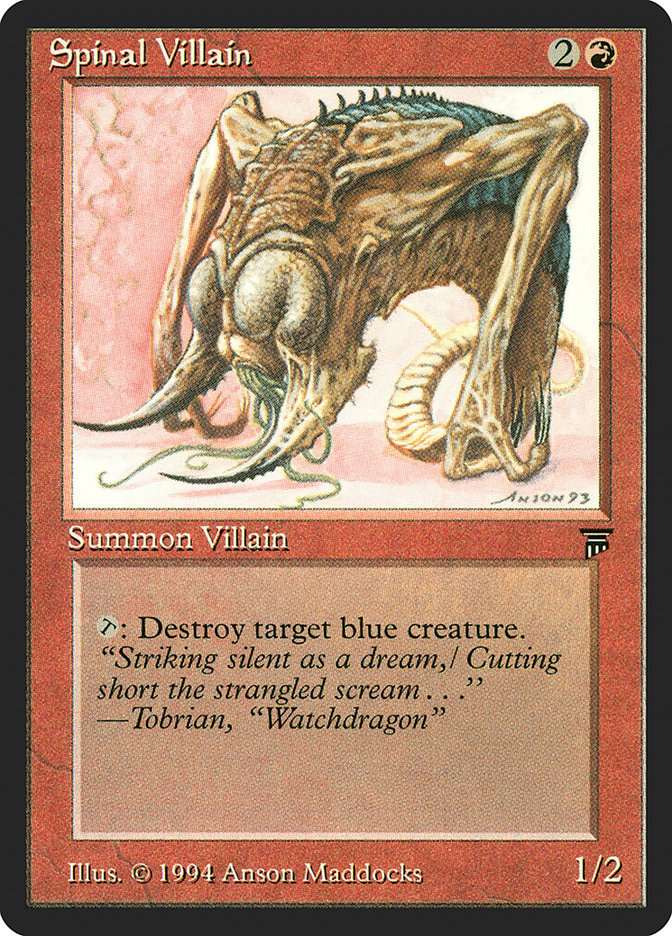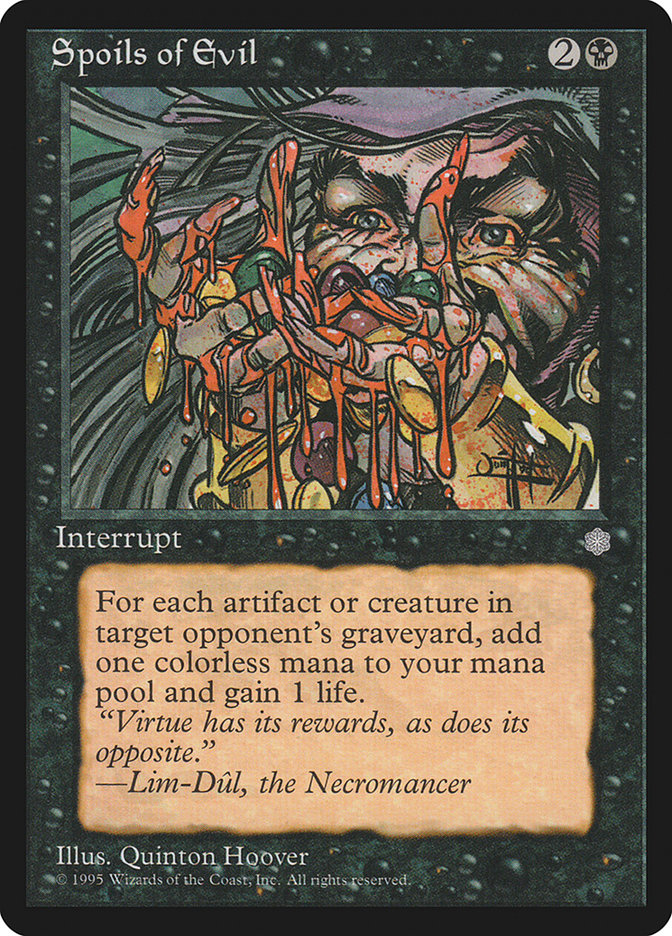There are the big, splashy cards in Commander that everyone knows about, and there’s a long list of staples that make their way into many decks.
Then there are cards in Commander that fewer folk know. We call them Hidden Gems.
Hidden Gems regularly come from sets that became legal when some newer players weren’t even born yet. They were either very good in formats that predate Commander/EDH and had a short run or were solid in early EDH but have since been eclipsed by better cards in the post-Commander era. We’re going to talk about a few of them this week. I’ve run Twitter and Facebook series over most of the last month, and these are the cards that made the list. There’s no particular order to them, so I’ll list them alphabetically.
In the earliest days of the format, Battlefield Scrounger was important. There were way fewer cards that let you put the stuff in your graveyard back into your deck for later use, especially if you weren’t in blue. The fact that you needed threshold in order to activate it was sometimes a little awkward, but it was one of the few ways to save cards from what graveyard hate existed back then (like Phyrexian Furnace—it would still be a bit before we saw Scrabbling Claws).
Card to Play with It: Cellar Door
Breathstealer’s Crypt is a nice way to slow down some of the decks that draw lots of cards and to force players into deciding if they like a creature enough to pay three life for it. Obviously, it also gives you the advantage of seeing everything that everyone draws, although the same goes for you. You’ll be ready for it, so you’ll have some lifegain to offset the loss. I’ve seen it used to great effect in decks that don’t have many creatures and against decks that have lots of them.
Card to Play with It: Exquisite Blood
Cleansing Meditation, the budget version of Replenish, does even more, since it gets rid of everyone else’s enchantments at the same time. You’re not casting Replenish until you have a graveyard full of viable enchantments, and that’s the same with Cleansing Meditation. It’s also simply a valid mass destruction spell for enchantments if you’re not in green for the cheaper (and instant) Back to Nature.
Card to Play with It: Teferi’s Care or Endless Wurm
I’ve written about Compost numerous times over the years, and somehow it keeps staying hidden. I’ll admit that there have been occasions when comes up blank because there are no other black players at the table, but those situations are few and far between. The number of cards you’ll draw when it’s not blank will more than make up for it. Best art is the Seventh Edition version.
Card to Play with It: Darkest Hour
There are huge creatures in Commander, some of them ridiculously so, like Lord of Extinction or Malignus. Slipping Death Watch onto one of them and then profiting is pretty easy; Serra Avatar is a definite kill. You’re playing black anyway, so it’s pretty likely that you’ll have some method of creature destruction, whether that’s a one-timer like Noxious Gearhulk (for double lifegain) or a battlefield sweeper like Decree of Pain.
Card to Play with It: Dies to Doom Blade, right?
After I featured Endrek Sahr, Master Breeder, some folks mentioned that it wasn’t so hidden. I still haven’t seen much of it played locally. There is just so much that you can do with all those Thrulls in order to keep yourself from having to sacrifice Endrek Sahr. Slam them into combat. Keep Lord of the Pit from damaging you. Scry to your heart’s content with Viscera Seer. The list goes on and on.
Card to Play with It: Coat of Arms.
One of my favorite cards and favorite messages, Equal Treatment has been saving my bacon for more than a decade. It would be worth playing even if it didn’t replace itself. I’ve used it for the most part to save my face from damage, but there are certainly cases that it would be useful to prevent some damage to creatures. It would render Blasphemous Act and Chain Reaction far less deadly, and may even save you from the constant companion of those two, Repercussions. You also can’t ignore that it will double damage from one-power creatures, which I’ve used once or twice as a finisher.
Card to Play with It: Keep Watch, so you can draw into it during the attack.
Black has trouble dealing with enchantments without the support of another color. Enter Gate to Phyrexia, which is another thing to do with those Thrulls from Endrek Sahr. There are lots of great artifacts running around Commander tables, and likely a few of them will harsh your mellow, so destroying them at little to no cost keeps you in the zone.
Card to Play with It: Disciple of the Vault
When I featured Grim Feast, several people told me to keep my trap shut, that it was deeply hidden and they wanted it to stay that way. Creatures are a big part of Commander and many of them have considerable backsides. Creatures also die with some regularity in the format, so unless everyone is attacking you, you’re likely to gain more than you’ve lost from attacks when the inevitable battlefield wipe happens. Again, you’re in black, so some creatures are going to die, so you’ll be gaining a benefit for doing what you’re already doing.
Card to Play with It: Sheoldred, Whispering One
It might be a little bit of a broad generalization, but blocking only happens in situations that are desperate, hiddenly advantageous, or in hopes of a good trade. That leaves loads of unblocked creatures getting through for some nice card draw with Hunter’s Insight. Adding planeswalkers to the mix is a nice upgrade. The trick with Hunter’s Insight is to not wait for the big payoff. Three or four cards now are worth five or six a few turns down the road.
Card to Play with It: Edric, Spymaster of Trest
Every time I mention Keep Watch, I get two responses. One is in the moment, and it’s some version of “Huh, never heard of it.” The other is later, and it’s along the lines of “Holy cow, this card is amazeballs!” Now that you’ve heard of it, I suspect that I will still be hearing the latter.
Card to Play with It: Aetherize
What’s completely maddening about Maddening Imp is that there’s no “summoning sickness” clause, which several similar cards have. If creatures don’t have haste, they’re in trouble. Your only issue is figuring out which opponent to use it on, unless you have a way to get the Imp untapped, like with Thornbite Staff.
Card to Play with It: Peacekeeper
Mercadia’s Downfall is such a beating that it should be called Mercadia’s Savage Downfall. Folks justifiably like nonbasic lands. I don’t like to overcommit to nonbasics, and I still average around fifteen to seventeen of them in my decks. Especially when used on a commander, the card can be deadly. One of my favorite stories is getting one-shot killed by an attacking Riku of Two Reflections when the player swung into me, cast Mercadia’s Downfall (me having ten nonbasics), and copied it with Riku.
Card to Play with It: Xenagos, God of Revels
Hey, here’s another card to play with Endrek Sahr! Reading Perilous Forays carefully, you see that you can get dual lands with this one. I’ve gotten lots of mileage out of Perilous Forays in my The Threat of Yasova deck. Even if you can’t attack with the creature, you can turn it into a land, which will help you “borrow” creatures while still doing other things. Add Roil Elemental and you can get rid of as many creatures as you have untapped lands, exploding your own land base. Since your lands enter the battlefield tapped, add either Amulet of Vigor or Lotus Cobra to kill every creature you want to.
Card to Play with It: Death’s Presence
I’m given to understand that drawing cards is good. Rayne, Academy Chancellor is the not-broken half of Leovold, Emissary of Trest. You’d be surprised how often your things get targeted (likely more by abilities than spells), and for the three mana you invest in Rayne, who isn’t really the creature that people are going to think to kill, you’re going to draw quite a few cards. Maze of Ith is the card I love to see opponents play when I have Rayne on the battlefield, because you know I’m getting into the Red Zone anyway.
Card to Play with It: Indestructibility
My somewhat blistering take on Reap is that it’s a better card than Regrowth. It costs the same, is an instant, and grants a restock that is on average several times what you get back with Regrowth. Just like with Compost, there might be a few games in which it’s blank, but those will be in the minority. Too bad it’s not available in foil.
Card to Play with It: Sway of Illusion
Recross the Paths gets shrugs until I convince someone to play with it. Then they lose all doubts. I found it when I built the original version of my Intet, the Dreamer deck and it has remained there ever since, as well as getting worked into a few other decks. Obviously, some top of the library control, like Sensei’s Divining Top, can make your clashes better. One of the good things about it I’ve found is that you generally know which player at the table to clash with. Pro tip: it’s not the one running Mayael, the Anima.
Card to Play with It: Scroll Rack
When I posted River Kelpie, many players told me that it’s no longer hidden since Muldrotha, the Gravetide came out. Even if you’re playing it in something other than a Muldrotha deck, it has lots of legs. You can combo it with other persist creatures; Melira, Sylvok Outcast; and a sacrifice outlet to go nearly infinite (although you want to be careful about drawing yourself out), or, like I do in my Ikra and Kydele deck, pair it with Endless Whispers for both hilarity and shenanigans. Reanimator strategies obviously love it as well, and it’s pretty fond of them.
Card to Play with It: Cauldron of Souls
Blue might be the weakest creature color, but it’s the second-strongest color in Commander (green taking top honors, a topic which I’m happy to debate), which means that there will be plenty of blue creatures to murder with Spinal Villain. Because blue is weaker creature-wise, the blue creatures which get played are generally the best of the best, meaning that you’re going to want to get rid of them as quickly as possible. Spinal Villain is another card that combos well with Thornbite Staff.
Card to Play with It: Burning Sands (assuming you don’t want to have any friends left)
In Commander, graveyards get full. Spoils of Evil lets you use that fullness to fuel your own nonsense and gain some life while you’re doing it. It’s not like Dark Ritual in that you can’t use it early in the game, but when you play it, you’re going to net more than two mana. You can certainly use it to fuel out some fatties in the middle turns, and since it produces colorless mana, one of those fatties can be Kozilek, the Great Distortion.
Card to Play with It: Traumatize
One of the great things about Magic is that there are simply too many cards to know about them all. We’re about to cross the 20,000 threshold. Sure, we all know about the most popular ones, but when you have nearly all of those 20,000 at your command, you can dig deep into the recesses of the game’s past to find gleaming treasures.
Question of the Week
This week’s question comes from Viperion on the official forums. It’s in light of the news that we’re getting 36 new planeswalkers in War of the Spark, one in each booster pack.
Do you put planeswalkers in most of your decks? Do you look for planeswalkers that enhance the deck’s themes, or do you put them in as a kind of catch-all backup for the other utility slots in your decks?
I’ll generally put a few planeswalkers in each deck, generally based on the thematic elements (such as Venser, the Sojourner in a blink deck), but I can’t ignore that there are some utility planeswalkers, such as Garruk Wildspeaker, that are just good cards. Planeswalkers in Commander can be powerful, but they’re highly vulnerable, since you have three or four opponents that aren’t going to want you to get to their top abilities. I tend to keep that in mind to avoid committing to too many of them.
Check out our comprehensive Deck List Database for lists of all my decks:
SIGNATURE DECKS
Purple Hippos and Maro Sorcerers; Kresh Into the Red Zone; Halloween with Karador; Dreaming of Intet; You Did This to Yourself.
THE CHROMATIC PROJECT
Mono-Color
Heliod, God of Enchantments; Thassa, God of Merfolk; Erebos and the Halls Of The Dead; Forge of Purphoros; Nylea of the Woodland Realm; Karn Evil No. 9.
Guilds
Lavinia Blinks; Obzedat, Ghost Killer; Aurelia Goes to War; Trostani and Her Angels; Lazav, Shapeshifting Mastermind; Zegana and a Dice Bag; Rakdos Reimagined; Glissa, Glissa; Ruric Thar and His Beastly Fight Club; Gisa and Geralf Together Forever.
Shards and Wedges
Adun’s Toolbox; Angry, Angry Dinos; Animar’s Swarm; Borrowing Stuff at Cutlass Point; Ikra and Kydele; Karrthus, Who Rains Fire From The Sky; Demons of Kaalia; Merieke’s Esper Dragons; Nath of the Value Leaf; Queen Marchesa, Long May She Reign; Muldrotha, Speaking Primely; Queen Marchesa’s Knights; Rith’s Tokens; The Mill-Meoplasm; The Altar of Thraximundar; The Threat of Yasova; Zombies of Tresserhorn.
Four-Color
Yidris: Money for Nothing, Cards for Free; Saskia Unyielding; Breya Reshaped; Yidris Rotisserie Draft Deck.
Five-Color
Partners
Tana and Kydele; Kynaios and Tiro; Ikra and Kydele.
THE DO-OVER PROJECT
Adun Oakenshield Do-Over; Animar Do-Over; Glissa Do-Over; Karador Do-Over; Karador Version 3; Karrthus Do-Over; Kresh Do-Over; Steam-Powered Merieke Do-Over; Lord of Tresserhorn Do-Over; Mimeoplasm Do-Over; Phelddagrif Do-Over; Rith Do-Over; Ruhan Do-Over.
If you’d like to follow the adventures of my Monday Night RPG group (in a campaign that’s been alive since 1987) which is just beginning the saga The Lost Cities of Nevinor, ask for an invitation to the Facebook group “Sheldon Menery’s Monday Night Gamers.”


